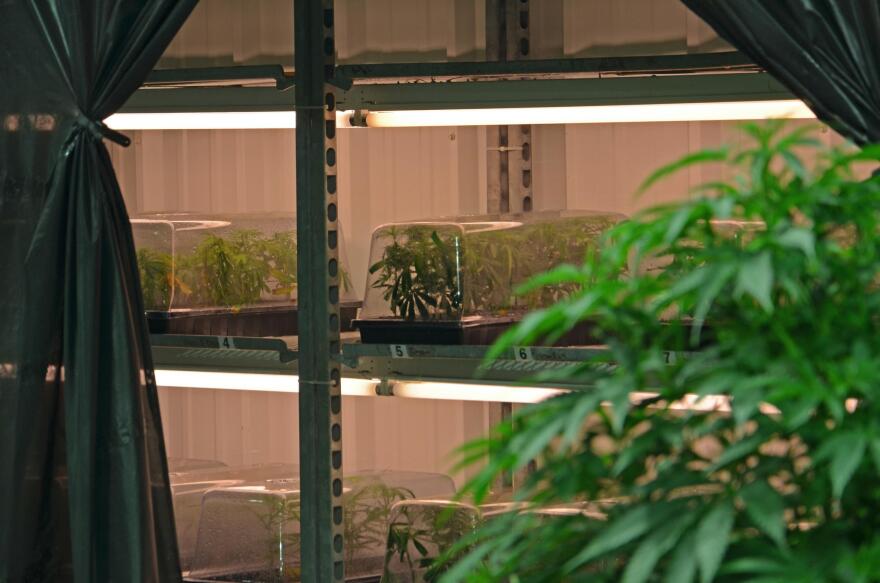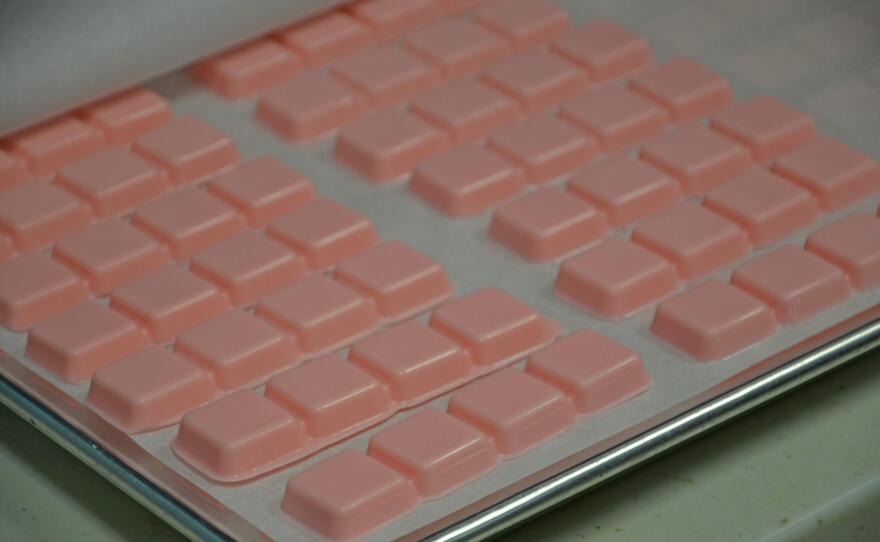Adam Colgan remembers the exact date he first tried snowboarding. "January 22nd, 2011," he said, adding nothing about that day's fun in the snow seemed unusual at the time.
"I fell on my ass, which is totally normal and completely fine."
Except everything was not fine. Colgan developed an infection from that tumble, and the infection ultimately resulted in arthritis. That began a five year quest for pain relief, which Colgan chronicles in his short film documentary, Prescription Pot: The Journey for Pain Relief.
Colgan, a film minor at Western Illinois University, said he tried over-the-counter pain relievers and stronger prescription medications but felt the side effects from drugs such as Methotrexate were not worth it. Then he came across the possibility of using medical cannabis and decided to give it a try.

First, though, Colgan had to get his doctor's approval. Once that was secured, he still had to complete numerous steps with the state of Illinois, which is operating a Medical Cannabis Pilot Program through June 30, 2020.
Colgan received help from Medical Cannabis Outreach to make sure that all the "i's" were dotted and "t's" were crossed on his application, that he paid appropriate fees, and that he tended to other details -- for example, the photograph for his medical card had to be in color; black and white photos are not allowed.
"It's a hard state to get medical cannabis in," he said.
Colgan said it changed his life when he received his medical marijuana ID card in March 2016. He said the drug has allowed him to walk without pain for the first time in five years.
"I do thank the state of Illinois for instituting this. It has absolutely 100% changed my life for the better and I could not be more thankful that they've implemented it," Colgan said.
Colgan said he buys his medical marijuana from Salveo Health and Wellness, a state-licensed medical marijuana dispensary in his hometown, Canton. Dispensaries in Illinois must buy their medical cannabis from cultivation centers located in the state.
Colgan said he’s had to experiment to learn his tolerance because does not "...want to be walking around everywhere looking like a zombie." He said his goal is to relieve the pain of arthritis.
And he said people need to get over their fears about medical marijuana -- he said users are not a bunch of stoners, they're normal people looking for pain relief.
Colgan said he finds relief mostly through products from one particular cultivation center.
"I'm always rotating between different strains and different cultivators. But I always go back to Nature's Grace and Wellness. I've got quite a few of their vape pens and quite a few different strains of theirs that I continuously go back to," he said.

Nature's Grace and Wellness
From the outside, you might not guess what's growing on the inside of the building.
The medical cannabis cultivation center Nature's Grace and Wellness looks like a warehouse. The red building with white trim rises from the farm fields just outside the small town of Vermont in southwestern Fulton County. A tall chain link fence surrounds the building, which sits at the end of a long and winding gravel drive.
Security is tight. It seems as though cameras are pointed in every direction. Workers must change into scrubs with the pockets sewn shut.
The business is operated by the O'Hern family. They are farmers, though they're more accustomed to working with cattle than cannabis.
"This whole program is a learning experience," said Chief Operating Officer Tim O'Hern. "This is such a new industry that it presents an outstanding opportunity to learn."
Chief Financial Officer Larry O'Hern -- Tim's father -- said no detail is too small as they learn how to get the most out of their plants.
"These plants are like thoroughbreds. We ask this plant to grow and do things that we normally wouldn't ask a plant to do in order to get the highest THC strains. This plant cannot have a bad day," he said.
And Larry O’Hern said the family’s investment in medical marijuana runs deeper than just the financial commitment.
“My son Tim contracted MS, was diagnosed with MS. And cannabis was a viable option for MS,” he said.
“I also have a daughter-in-law with epilepsy so we have a personal contact with what cannabis can do for medication for our family.”
The marijuana plants begin their growth cycle in what's called the vegetative room. It's a large, warehouse size space. Hundreds of overhead, 1,000 watt high pressure sodium lights brighten the room 24 hours a day, seven days a week. Fans circulate the air to prevent the room from becoming too warm. Workers constantly tend to the plants.
Plants are eventually moved to the flowering room, another large space where the lights are on for 12 hours and off for 12 hours.
The business' monthly electric bill is around $20,000, which is about half of what was projected. The O'Herns use rainwater on the plants when they can and they also utilize manure from their cattle farm.
Once the plants have matured, they are taken to another section of business where the buds and flowers are removed. Next comes the extraction process, which creates a thick, sticky substance that is used in the edibles, topicals, and vape products.
Tim O'Hern said the business keeps close tabs on the plants each step of the way.
"You'll see every plant has a number of identifying tags, which identify its date of planting, the strain variety, and a unique bar code so the plant can always be tracked throughout its entire life cycle."
That's not just for security -- it also helps the business keep track of what works and what doesn't work with their plants and products.

The O'Herns said the business has"26 to 28" employees, including security officers, grow managers, processing agents, and extraction managers.
Illinois’ Pilot Program for Medical Cannabis
The state’s medical marijuana program allows for one cultivation center in each of Illinois' 21 state police districts. 19 were operating as of last fall.
Dispensaries can be located wherever needed to meet the demand. The program allows for up to 60 dispensaries, and 51 dispensaries were licensed across the state as of February 1, 2017.
“The program is still in its infancy. It’s just getting started. We’re happy with the growth so far,” said Jack Campbell, the Medical Marijuana Pilot Program Director.
“People now are being helped by medical marijuana that previously did not have a chance to get this.”
The state began accepting applications for the program in September, 2014. The Illinois Department of Public Health reported that as of February 1, 2017, it had approved applications for 15,900 patients, including 134 people younger than age 18.
The state reported total retail sales at dispensaries added up to more than $42.2 million since November, 2015, and wholesale sales from cultivation centers since that date totaled $25.9 million.
Campbell said Illinois set a high bar for cultivation centers, dispensaries, and patients. He said, for example, the cultivation centers are inspected more than once a week, as opposed to perhaps once a month in other states.
“We have been contacted by at least six or seven other states to talk to us about how we did this because they’re very impressed by how Illinois set up their program,” he said.
Western Illinois University is a short drive from Nature’s Grace and Wellness but the university’s researchers are not allowed into the cultivation center to do studies.
“There is another industry in Illinois, the Industrial Hemp program. They’re affiliated with four-year universities and the Department of Agriculture. That gives them their chance to research industrial hemp but not medical marijuana,” said Campbell.
“These facilities (medical marijuana cultivation centers) are very specific to the permit holders themselves. They’re the ones that had to come up with the funding, the financing, and the application, and they’re the ones that provide the employees and do all the research and development themselves.”
He said the state might one day look at whether to allow university researchers into medical marijuana cultivation centers. But he pointed out marijuana is still labeled as a Schedule One drug by the federal government so university researchers would have to jump through a lot of hoops just to get the clearance to do studies.



